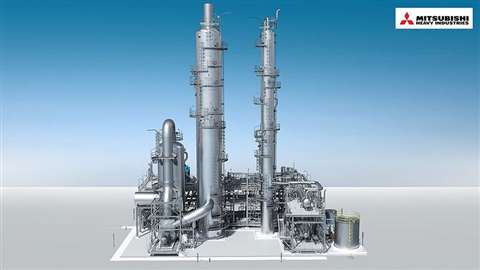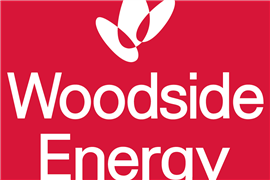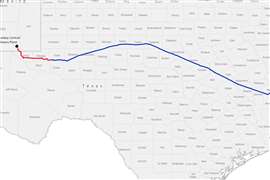Read this article in 中文 Français Deutsch Italiano Português Español
Mitsubishi Heavy teams with carbon capture firm
April 27, 2023
Seeks to expand business in Europe, Middle East
Mitsubishi Heavy Industries (MHI) said it will collaborate with Saipem, one of Europe’s leaders on CO2 capture.
Under a General License Agreement (GLA), MHI will provide Saipem with its proprietary KM CDR Process and Advanced KM CDR Process technologies for use in CO2 capture plants. Both technologies were jointly developed with The Kansai Electric Power Co.
Saipem is a leading global solution provider that performs engineering, procurement, construction and project management in the energy and infrastructure sector. With bases in more than 70 countries, the company possesses advanced, innovative engineering technologies, and MHI said it has had a cooperative relationship with Saipem for many years relating to the latter’s Snamprogetti Urea technology, resulting in construction of world-class scale fertilizer plants. Now, through the collaboration in CCUS (Carbon Capture, Utilization and Storage), a structure is in place enabling execution of CO2 capture plants making use of the two partners’ respective strengths.
 A CO2 capture plant (conceptual image). (Image: MHI)
A CO2 capture plant (conceptual image). (Image: MHI)
The strategic new tie-up is aimed at expanding sales of CO2 capture plants to Saipem’s core business fields, especially in Europe and the Middle East, where demand for decarbonization is expected to increase in the years ahead. With the ability to accommodate numerous projects, MHI looks to ensure a leading position in the developing global CCUS market. The newly expanded collaboration with Saipem can be expected to further advance MHI’s global CCUS strategy in addition to other partnerships MHI has formed over the years globally.
“This agreement, signed with a key partner such as Mitsubishi Heavy Industries, allows Saipem to combine its expertise and track record in designing and building Upstream, Mid-stream and Downstream facilities with the most advance post-combustion technology for large plants,” said Fabrizio Botta, Saipem’s Chief Commercial Officer. “This enables Saipem to further consolidate its position and expand its portfolio of solutions in the decarbonization sector.”
MHI has declared MISSION NET ZERO to achieve carbon neutrality by 2040, and the company is now undertaking strategic initiatives toward decarbonizing the energy supply side. Core among those efforts is the development of a CO2 solutions ecosystem, which links diverse carbon emission sources with storage and utilization.
MHI has been developing the KM CDR Process (Kansai Mitsubishi Carbon Dioxide Recovery Process) and Advanced KM CDR Process in collaboration with Kansai Electric Power since 1990. As of April 2023, the Company has delivered 15 plants adopting the KM CDR Process, and three more are currently under construction. The Advanced KM CDR Process uses KS-21, which incorporates technological improvements over the amine-based KS-1 solvent adopted at all 15 of the commercial CO2 capture plants MHI has delivered to date. The advanced version offers superior regeneration efficiency and lower deterioration than the KS-1, and it has been verified to provide excellent energy-saving performance, reduce operating costs, and result in low amine emissions.
MAGAZINE
NEWSLETTER

CONNECT WITH THE TEAM









